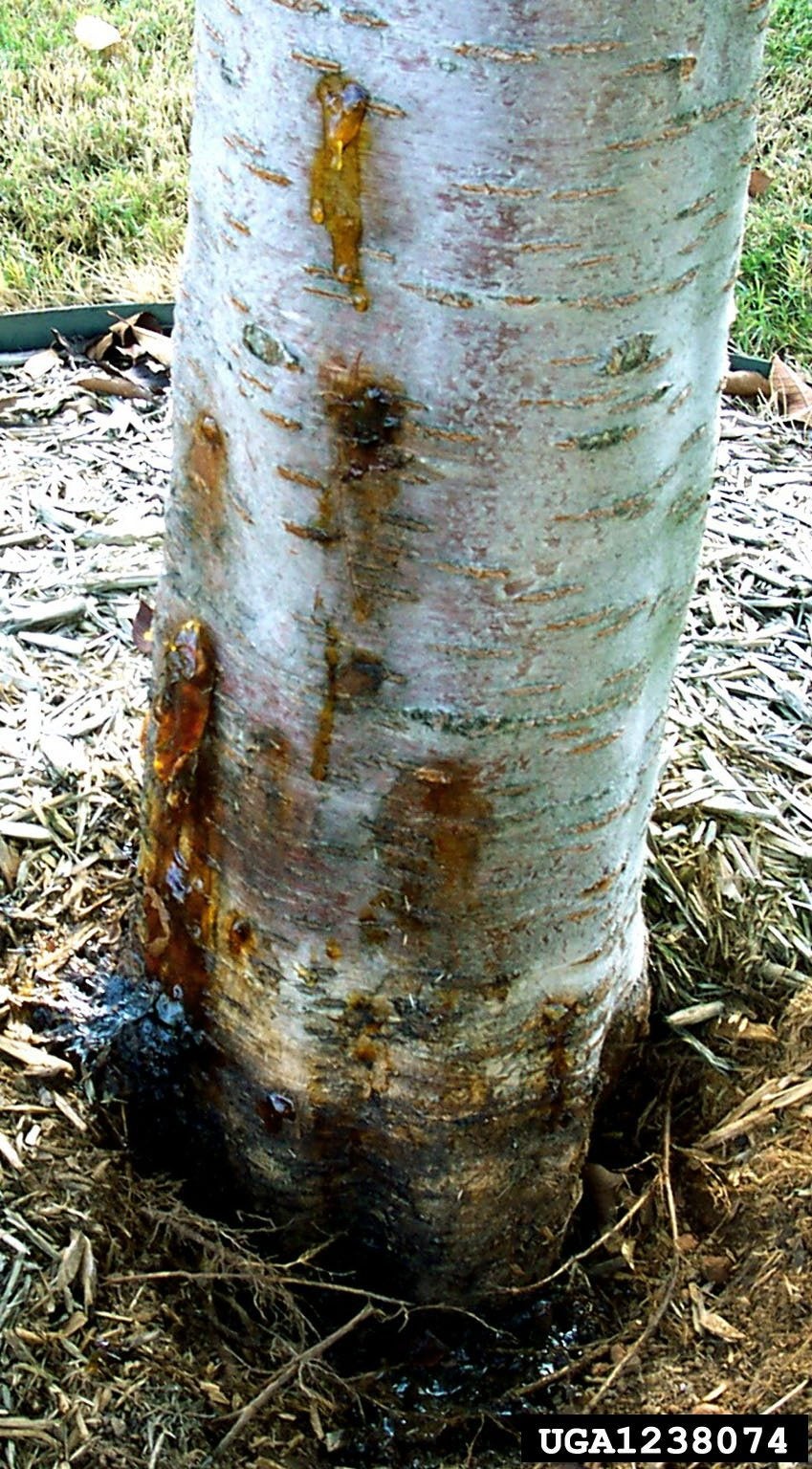Cherry Borer Treatment: Tips For Controlling Cherry Tree Borers


There are two types of borers that commonly infest cherry trees: the peach tree borer and the shot-hole borer. Unfortunately, both types of cherry tree wood borers can be difficult to control. Read on to learn more about these unwanted pests.
Cherry Tree Borer Damage
The larvae of the borers are responsible for cherry tree borer damage, as the pests feed on the wood, unlike other pests that feed on the plant juices or foliage. If your trees are affected by cherry tree wood borers, you may notice a gummy sap oozing from small holes in the trunk. The small holes are a sign of big trouble, as shot-hole borer larvae (adults are brown or black beetles with striped wings) create tunnels that block the free flow of nutrients and water. In time, you’ll notice wilting and browning of leaves and branches. The larva of peach tree borers (adults resemble steel blue wasps) leave behind tiny wood shavings and a powdery substance known as frass, a waste material excreted by the pests, usually seen in the bottom 12 inches (31 cm.) of the trunk, or just below the soil. Cherry tree wood borers rarely bother healthy trees (both fruiting and ornamental), indicating that prevention is the best means of control. Trees weakened by sunscald, drought, lawnmower injury, poorly drained soil, or other stresses are most susceptible to cherry tree borer damage. Water cherry trees well during periods of drought, including once a month or so during dry winters. Add compost or manure to the top 2 to 4 inches (5-10 cm.) of soil and cover the soil with a 2 to 3 inch (5-8 cm.) layer of bark or another organic mulch. Provide a balanced fertilizer.
Cherry Borer Treatment
Knowing how to control cherry tree wood borers can help should problems occur despite all your best efforts. Pyrethrin-based bark sprays often work well as a preventive measure. Spray the trunk and main limbs, but it isn’t necessary to spray the leaves. Timing is critical, as the spray must be on the bark during the short period of time between egg-hatching and when the borers actually enter the tree. This way, the newly hatched larvae are sure to crawl over the treated bark. Sticky traps are sometimes useful, but their effectiveness is limited because they only attract adult males. If you have trouble controlling your cherry tree wood borer population, your local University Cooperative Extension can provide more specific advice for your particular situation.
Sign up for the Gardening Know How newsletter today and receive a free copy of our e-book "How to Grow Delicious Tomatoes".

A Credentialed Garden Writer, Mary H. Dyer was with Gardening Know How in the very beginning, publishing articles as early as 2007.